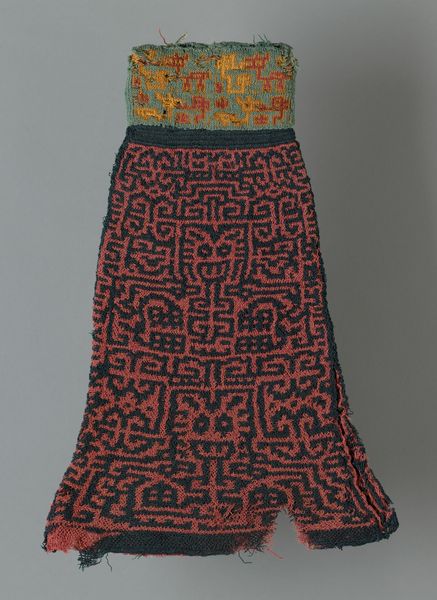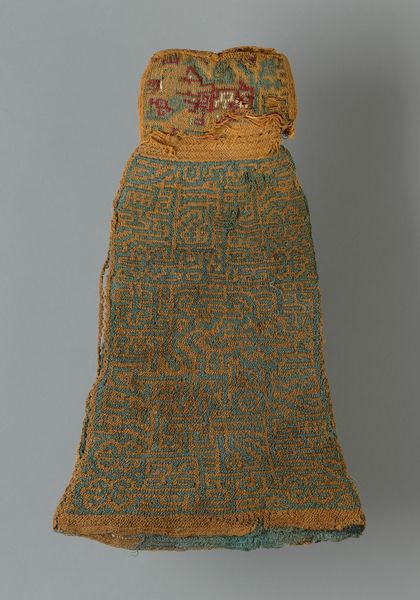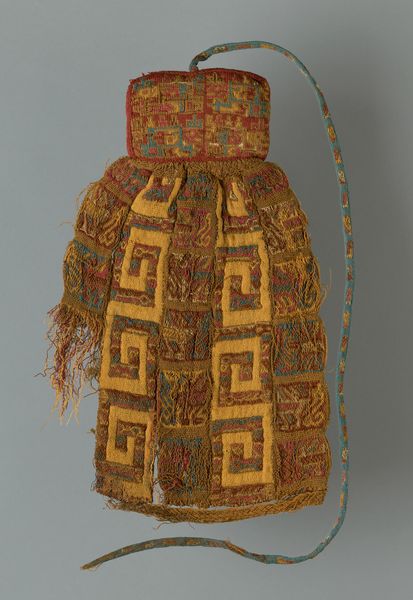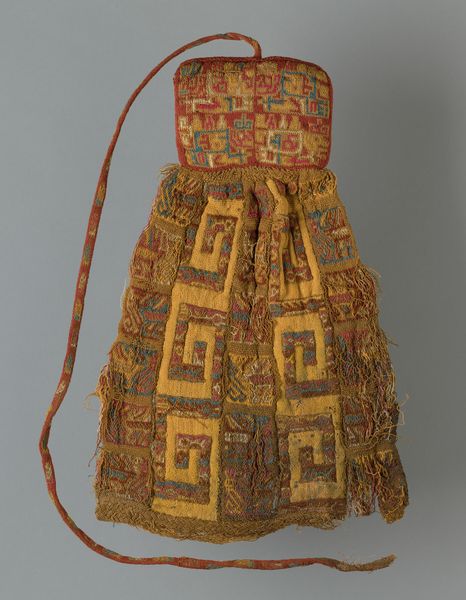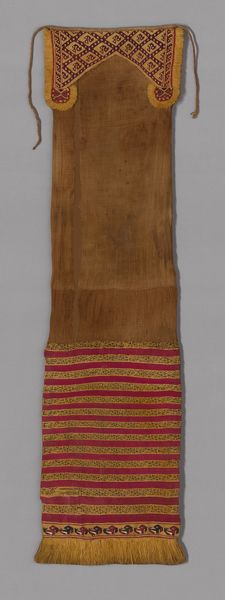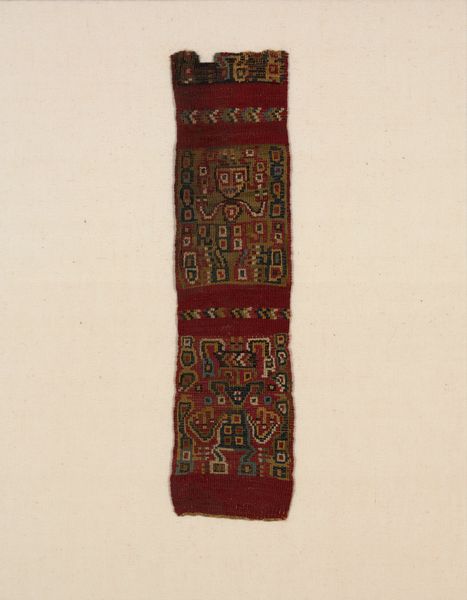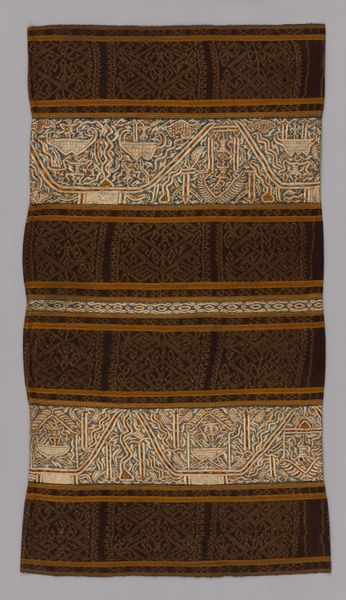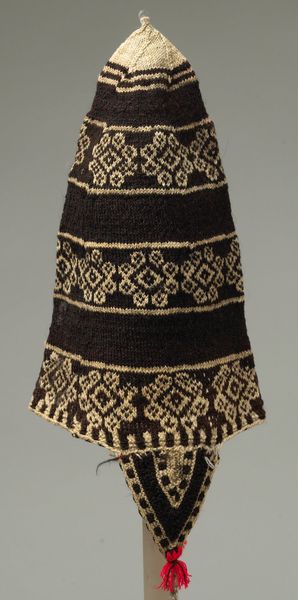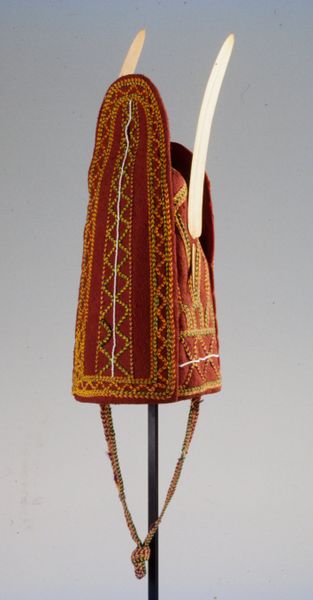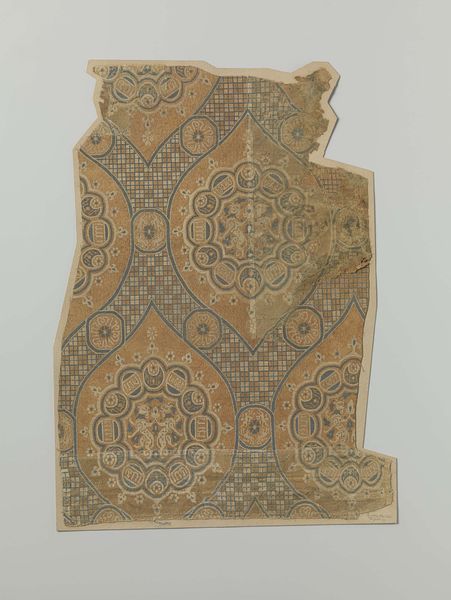
fibre-art, weaving, textile
#
fibre-art
#
weaving
#
textile
#
geometric pattern
#
geometric
#
geometric-abstraction
#
indigenous-americas
Dimensions: 37.5 × 23.5 cm (14 5/8 × 9 1/4 in.)
Copyright: Public Domain
Editor: Here we have a fascinating textile from the Nazca culture, titled "Tassel," dating from 500 to 900 AD. The geometric patterns are quite striking, almost like a maze. How do you interpret this work within its historical and cultural context? Curator: The Nazca people, flourishing in ancient Peru, placed significant cultural weight on textiles. Weaving, unlike painting or sculpture in our Western art tradition, was a primary medium for social and religious expression. These weren't merely decorative items, but rather, they communicated status, ritual significance, and cosmological beliefs. Notice the complexity of the geometric abstraction. Do you think that complexity affected how people understood its purpose? Editor: I hadn’t considered that the complexity itself might have held meaning. Did specific patterns relate to specific social roles, or perhaps religious practices? Curator: Exactly. Historians often link such geometric motifs to Nazca pottery designs and, perhaps more speculatively, to the famous Nazca Lines. They suggest that some of these patterns reflect shamanistic visions, ancestor veneration, or agricultural cycles. Remember that the museum context frames our viewing experience. This tassel might have been originally displayed or worn in entirely different social contexts - burial sites or ceremonial events, potentially affecting the social response. Editor: So the original function significantly changes how we understand its place within society. It's less about aesthetics in our modern sense, and more about its role within a belief system. Curator: Precisely. Our Western concept of “art” often imposes a limited frame. Considering the original social and political roles is vital. Editor: That makes so much sense. I'll never look at textiles the same way again! It highlights how objects carry their social history with them, reshaping our perception. Curator: Indeed! Seeing art as a form of social commentary and practice. Always consider how we are influenced by its display as an object.
Comments
No comments
Be the first to comment and join the conversation on the ultimate creative platform.
